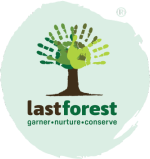காடுகளில் இருந்து பச்சையான, பதப்படுத்தப்படாத காட்டுத் தேன் - நீலகிரி தேன்
பல நூற்றாண்டுகளாக, நீலகிரி உயிர்க்கோளக் காப்பகத்தின் பசுமையான வனச் சரிவுகளில் உள்ள சமூகங்கள், தலைமுறை தலைமுறையாகத் தேன் வேட்டையாடும் பழமையான முறைகளைப் பயன்படுத்தி, இந்த 'கடவுளின் உணவை' நிலையாக அறுவடை செய்து வருகின்றன.
இந்த பாட்டில் காட்டு நீலகிரி தேன், ராட்சத பாறை தேனீயின் ( Apis dorsata) தேனீக்களின் தேனீக்களில் இருந்து நிலையான முறையில் சேகரிக்கப்படுகிறது மற்றும் தேன் பதப்படுத்தப்படாத மற்றும் தூய்மையானதாக இருப்பதால் காட்டில் இருந்து நேராக ஏராளமான ஊட்டச்சத்து பண்புகளைக் கொண்டுள்ளது!
பல மலர்கள் - ராட்சத பாறை தேனீக்கள் நீலகிரி உயிர்க்கோள காப்பகத்தில் கிடைக்கும் பல்வேறு பூக்களிலிருந்து மகரந்தச் சேர்க்கை செய்து, தேனுக்கு தனித்துவமான நிறங்களையும் நன்மைகளையும் தருகின்றன.
பதப்படுத்தப்படாத - இந்த தேன் பதப்படுத்தப்படாதது - தேனில் உள்ள அனைத்து சத்துக்களும் அப்படியே இருக்கும் — ஹைவ் முதல் உங்கள் பாட்டில் வரை.
நீடித்த அறுவடை - தேன் பாட்டில் அறுவடையில் பயன்படுத்தப்படும் முறைகள் நிலையானவை, தேன் சேகரிக்கப்பட்ட பிறகு தேனீக்கள் மீண்டும் படைக்கு திரும்புவதை உறுதி செய்கிறது.
தனித்துவமான தேன் ரெயின்போ - நீலகிரி தேனின் இந்த பாட்டில் பல்வேறு வண்ணங்களைக் கொண்டுள்ளது, அவை கிட்டத்தட்ட தெளிவான ஒளி, ஆம்பர், முற்றிலும் ஒளிபுகா இருள் வரை இருக்கும். நிறமே தேனின் தரத்தைக் குறிப்பதல்ல, அது எந்த பூச்செடிகளில் இருந்து தேன் சேகரிக்கப்பட்டது என்பதன் விளைவு மட்டுமே. எங்கள் தேன் எப்பொழுதும் காட்டு படையில் இருந்து வருகிறது, எனவே ஒவ்வொரு தொகுதியும் காட்டில் வெவ்வேறு நேரத்தை பிரதிபலிக்கிறது.
இயற்கை சர்க்கரைகள் - இந்த தேன் ஒரு இயற்கை இனிப்பு, இயற்கையாக நிகழும் சர்க்கரைகள் (குளுக்கோஸ், பிரக்டோஸ், சுக்ரோஸ் போன்றவை) அடங்கியது.
சுற்றுச்சூழல் நட்பு பேக்கிங் - இந்த பாட்டில் முழுமையான சூழல் நட்பு பேக்கிங்கில் வருகிறது - பாட்டிலுக்கு ஏற்றவாறு தயாரிக்கப்பட்ட நெளி பெட்டிகள், பூஜ்ஜிய உடைப்பை உறுதிசெய்து, தீங்கு விளைவிக்கும் பேக்கேஜிங்கிலிருந்து கிரகத்தை அகற்ற பங்களிக்கின்றன!
இங்கே தேன் பற்றி மேலும் அறிக .
![]()
![]()
![]()
![]()
![]()
Ingredients
Unique Honey Rainbow
Other Details
Product information
'Pioneering sustainable living choices by
connecting communities and markets'

Frequently Asked QuestionsAny more questions? We got you covered!
Why is my honey crystallizing/crystallized?
What are the health benefits of honey?
How is honey collected?
Why wild honey?
Is Last Forest [honey] organic certified?
Does honey expire? How long does my honey last?
Is Last Forest [honey] organic certified?




























